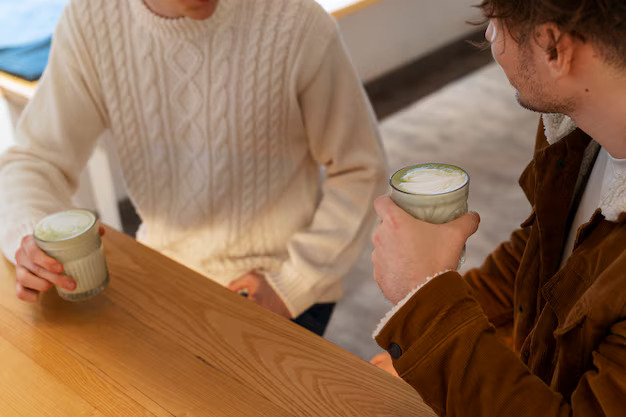In cafes from Tokyo to Toronto, a quiet revolution is steeping. It’s not just a health trend—it’s a cultural shift. Meet the “Matcha Man”: the modern male who unapologetically swaps espresso shots for emerald-green lattes. What once was a wellness darling of yoga moms and lifestyle influencers is now being claimed by men seeking focus, calm, and yes—flavor.

The Masculinity Myth Is Stirred
For decades, dark roasts and strong coffee have been linked with stereotypical masculinity. But in 2025, men are ditching those outdated tropes for matcha—a powdered green tea that’s as ancient as it is futuristic. And it’s not just about the taste. Matcha is loaded with L-theanine, a rare amino acid that promotes calm alertness without the jittery crash of caffeine.
Social media, particularly Instagram and TikTok, has amplified the trend. The hashtag #MatchaMan is gaining traction as men share their vibrant green drinks alongside fitness routines, minimalist aesthetics, and self-care tips—turning matcha into a lifestyle symbol, not just a drink.
Read more about : Matcha Lovers Beware: The Hidden Link Between Matcha and Low Iron
Why Matcha Appeals to the Modern Man
Balanced Energy: Matcha contains about 70mg of caffeine per serving—less than coffee—but its pairing with L-theanine creates a calm, focused energy ideal for work or workouts.
- Boosts Metabolism: Studies show matcha can help increase thermogenesis (calorie burn), making it a popular pre-workout drink.
- Improves Mood: The L-theanine in matcha has been linked to increased dopamine and serotonin production—key for mood and stress regulation.
- Rich in Antioxidants: One cup of matcha has more antioxidants (EGCG) than ten cups of green tea.
Unknown Facts About Matcha You Didn’t Know
- Samurai Fuel: Matcha was originally consumed by Japanese samurai before battles to enhance mental clarity and endurance.
- Shade-Grown Superpowers: Matcha leaves are grown in shade for 20–30 days before harvest, boosting chlorophyll and amino acids—this is what gives matcha its bright green color and health potency.
- Ceremonial vs. Culinary: Ceremonial-grade matcha is made from the youngest tea leaves and is meant to be consumed pure, without milk or sweeteners. Culinary-grade is more robust and used in cooking and lattes.
- Detoxifying Effect: The high chlorophyll content helps detoxify the body by supporting liver function.
- Brain-Boosting Duo: Matcha combines the caffeine of coffee with the brain-calming benefits of green tea—making it one of the few natural nootropic drinks.
Matcha Man Is Here to Stay
Matcha isn’t just a health fad—it’s becoming a symbol of self-awareness, discipline, and holistic wellness among men. It aligns with a growing movement that embraces emotional intelligence, mindfulness, and mental well-being as masculine virtues.
Brands are noticing too. Global chains like Blank Street, Starbucks, and local Indian cafes are expanding their matcha menus to cater to this rising male demographic. Even gyms and wellness centers are incorporating matcha in smoothies and energy bowls.
In a world where redefining masculinity is more than just a social conversation, the “Matcha Man” might just be leading with a cup—not of black coffee—but of green calm.
